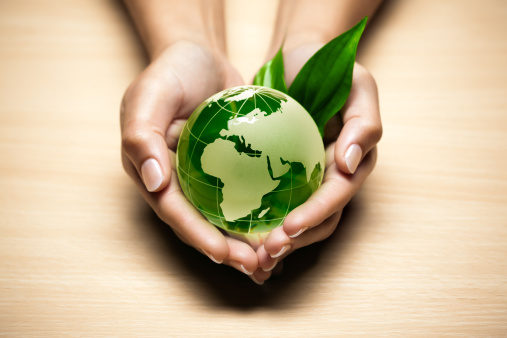In a lengthy speech laying out his administration’s current vision for climate change policy and the urgency with which it needs to be approached, President Barack Obama may have set an ambitious course for the United States as a global leader in the cause. “When President Kennedy said we’d go to the moon within the decade, we knew we’d build a spaceship and we’d meet the goal. Our progress here will be measured differently—in crises averted, in a planet preserved,” he said.
The specific goals and strategies referenced in this speech, delivered at Georgetown University on June 25, represent a major new initiative for the White House on climate change. He also referred to controversial issues like the Keystone XL pipeline from Canada. “Our national interest will be served only if this pipeline does not significantly exacerbate the climate problem,” Obama said, and it remains unclear whether the United States will approve its construction.
Reiterating his administration’s pledge to reduce U.S. greenhouse gas emissions by about 17 percent from 2005 levels by the end of this decade, he pointed to investments in wind and solar energy, as well as progress on the fuel efficiency of cars, as means toward achieving that goal. Increases in domestic energy production—from new nuclear power plants, and increased natural gas and oil production—have created jobs and increased the nation’s energy independence, he said. For the first time in 18 years, the country will produce more of its own oil than it purchases overseas. These advances have also led to the lowest level of carbon pollution in the United States in almost 20 years. “Since 2006, no country on Earth has reduced its total carbon pollution by as much as the United States of America,” said Obama.
While he encouraged work on a bipartisan, market-based solution for climate change, Obama said, “this is a challenge that does not pause for partisan gridlock. It demands our attention now.” He then explained ways he intends to address the issue through the power of the executive branch. Since the Supreme Court ruled in 2006 that greenhouse gases fall under the Clean Air Act of 1970, which allows the Environmental Protection Agency (EPA) to regulate pollutants, Obama says he is directing the EPA to complete greenhouse gas emissions standards for all new and existing power plants (USA Today reported that coal company shares continued their nosedive in the wake of the speech). Currently, while there are regulations on toxic chemical emissions, there are no limits on greenhouse gas emissions for power plants.
The other major goals set out in Obama’s speech included a directive for the Interior Department to approve enough private, renewable energy projects on public lands to power more than 6 million homes by 2020. He also noted that his budget again calls for Congress to end tax breaks for big oil companies, and to instead invest in clean-energy companies.
In addition to continued work on fuel efficiency standards for automobiles, Obama said that by the end of the next decade, combined efficiency standards for appliances and federal buildings will reduce carbon pollution by at least three billion tons. He also referenced the need for budgetary funds to help states and communities prepare for the negative impacts of climate change, and the need to encourage developing economies to stem their emissions. Finally, Obama emphasized the need to close in on an ever-elusive global climate change agreement.
Published in WholeFoods Magazine, August 2013










